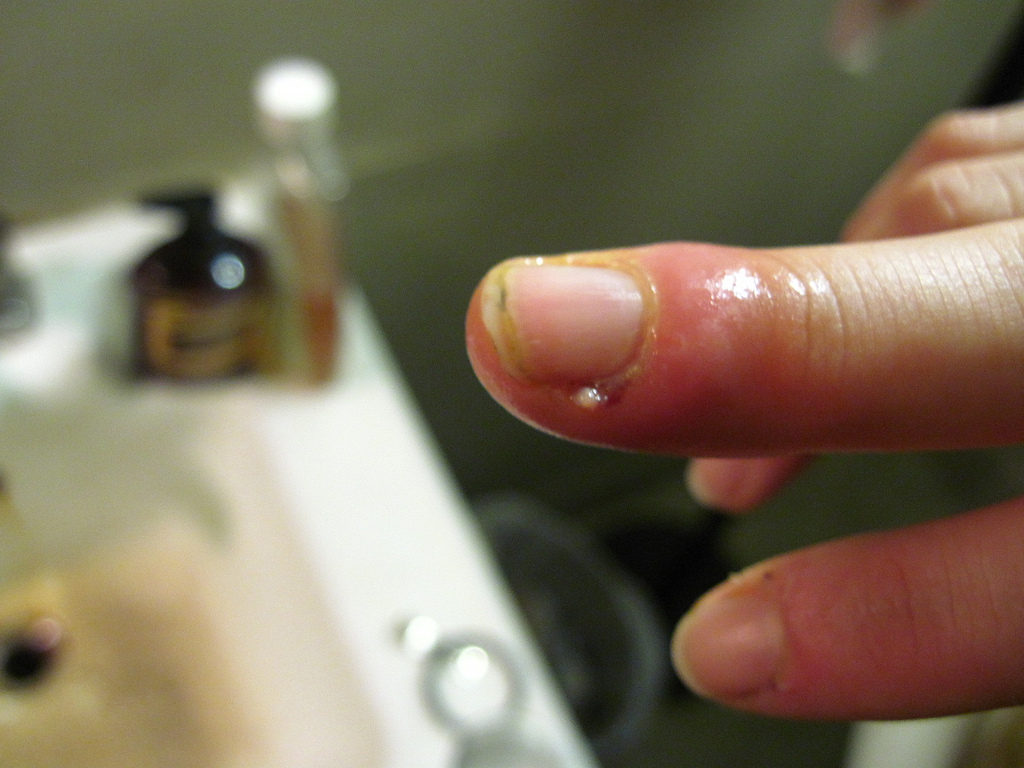The world houses a lot of unusual diseases and epidemics. With every passing minute a new disease is discovered and research begins immediately to find possible cures for the diseases. It is however important that proper sensitization is carried out such that preventive measures are implemented early enough.
Clostridium Difficle popularly known as C.Diff., is a relatively new epidemic that has begun to assume dominance across regions. I came across a blog story of a survivor of this dreaded disease, who thought it wise to enlighten people of its symptoms and the best ways by which it can be managed. Here are some things you need to know about C.Diff.
While some may find the subject indelicate, I believe it is important to relate my experience in order to raise awareness about C. Diff. for several reasons. First, epidemics of Clostridium Difficile occur with frightening regularity in various hospitals and long-term care facilities throughout Canada and many other nations. Fatalities are regularly reported. No one deserves to die so horribly, and the number of victims may be greatly reduced by research into superior protocols and enforcement in their implementation.
Secondly, standard testing for C. Diff. is inadequate. Superior, more accurate tests with the ability to detect not only the toxins C. Diff produces but also the strain of bacteria present do exist, but are not regularly used due to higher cost. Tracking the various C. Diff. strains, including the “Super-strain” I suspect I had, is essential to understanding the infection and the protocol that needs to be followed for effective treatment and the prevention of others from becoming infected. C. Diff is no longer fatal to only the weak or the elderly, and we need to know why perfectly healthy people are experiencing severe or fatal cases of this disease, as it indicates a change in the biology or dna of the bacteria itself and the possibility for even more virulent strains.
Third, very little is known about the long-term effects of a moderate-to-severe C. Diff. infection. Worldwide, forums exist where C. Diff. survivors electronically congregate in desperation. Some relapse into multiple C. Diff. infections after the initial infection. Others, like myself, experience constant debilitating pain and gastrointestinal malfunction that makes living a normal life impossible. Still others are diagnosed with Post-Infection Irritable Bowel Syndrome that never seems to go away, and others find they develop serious “food intolerance” and the inability to digest gluten, grains, dairy, and/or proteins. Vitamin and mineral deficiencies are common – the intestines seemingly unable to glean these nutrients from food any longer. Colitis and inflammation of the intestine are also common. And nearly every single survivor will tell you that C. Diff. “gets to your head”: survivors live in constant fear of infecting others, of relapse, and of dying in this truly horrible manner. Many survivors admit to living on Disability or social assistance, or relying on their families to support them as they are unable to work.
Fourth, recent research has linked Clostridia strains with Regressive Autism in children. It is hypothesized that the toxins Clostridia bacteria produce (in the case of C. Diff., called “A” and “B”, but able to be classified as (+) or (-)), which can so easily poison and destroy the intestine, may also act as neurotoxins, transmitted through the body to have an effect upon the brain and brain-development in children, as well as having the ability to effectively “turn on or off” parts of the gene believed to affect or cause Regressive Autism. This hypothesis (and indeed, the link seems to be strongly supported by several studies – see, for example, studies by Dr. Sydney Finegold, microbiologist, and Dr. Richard Sandler, pediatric gastroenterologist) has far-reaching implications for the so-called “Autism Epidemic” sweeping through developed nations.
For these reasons, I believe Clostridium Difficile (so-named because it was originally difficult to grow in a laboratory setting) is a family of infectious bacteria which requires further intense study, not only of the bacteria itself in laboratory settings, but of the post-infection lives of its survivors. Currently, prevention and post-infection complications are not receiving adequate attention.
My story: I first contracted the infection while spending a lot of time in a hospital with a family member who had been admitted for medical care. I was on a one-week antibiotic treatment for a sinus infection.
Despite my obviously deteriorating health, multiple trips to two doctors and to my local emergency room, it took four months to receive a diagnosis. In the meantime I was told I probably had Chron’s Disease, Colitis, Irritable Bowel Syndrome, allergies, or side-effects of depression, none of which was at all helpful. By the middle of month four, a clever ER doctor had me tested for C. Difficile. I was in very bad shape and extreme pain. The test came back positive for toxins A and B – toxins the C. Diff bacteria produce in the intestine. The bacteria was poisoning me – and I could definitely feel the effects of it. I had already been given a week’s course of Ciprofloxacin and Metronidazole orally before my diagnosis as an attempt to see if my condition improved, though no infection had yet been detected. Now, I was told by my doctors to start a course of Vancomycin orally. The medication cost $400.00 and was not covered by my prescription plan.
Unfortunately, I was by this time so infected, the tablets would not stay in me. My abdomen was extremely swollen and excruciatingly painful, and most of my digestive system, including my bowel and colon was in constant spasm. I was passing blood and spent most of my time in the bathroom. I could not eat or drink anything except small sips of water. My body was done fighting and could do no more. I no longer slept, and only found a few moments of relief when I was immersed in hot water baths.
One morning, after again failing to keep down the Vancomycin tablets and in an extremely weakened state, I was taken back to the hospital. I was unable to walk from the vehicle and was placed in a wheelchair. I was quickly triaged, and the ER doctor proceeded to report my case to the Infectious Disease department of the Public Health Agency of Canada, and to ask what protocol should be followed.
I was given two or three large bags of fluid intravenously, and was switched to Metronidazole (an antibiotic) to be administered every eight hours on the hour through IV. I was also given a cocktail of medications to alleviate my nausea, vomiting and involuntary muscle spasms through my IV line. I do not know whether there were no isolation rooms available in the hospital (which is the only one in our Territory), or whether I was simply considered too great of an infectious risk (these reasons were intimated to me by staff, in confidence and against hospital policy, I’m sure), but I was not admitted to the hospital despite my dire state. I was told to go home and isolate myself from my family. I was told to take over one of the bathrooms in the house as my own, and that no other family member should enter it or use it. I was also told to stay out of the kitchen, away from other’s food, and that dishes, clothes and linens I used should be washed at high temperatures and with bleach whenever possible. I was told to wash and sanitize my hands as frequently as my skin would allow. Little did I know that C. Diff. forms ultra-resilient spores which can even survive bleach. I was to return to the hospital ER department every eight hours without fail for IV treatment and monitoring of my vital stats and the state of my besieged bowel.
I could not effectively manage the extreme pain I experienced because I could not have strong pain medications – the doctor explained they were very worried about a condition called toxic mega-colon, and that if my bowel burst, I needed to be able to distinguish the different kind of pain so that they would know immediately and be able to act (once a C. Diff. patient’s intestine bursts, there is a very limited time to perform surgery and clean out the abdominal cavity; even then, 1 in 4 do not live). It was clear to my family and I that I was in very serious condition, and may possibly lose part of my intestine, colon, or even my life to this infection.
The IV sites started in my hands and wrists, and as my veins blew out or swelled shut from the extremely caustic nature of the medications they needed to carry, the needles were inserted farther and farther up my arms. Kindly nurses joked with me about my resemblance to a pincushion, especially when they had to search for veins from which to draw blood samples. I grew used to the bite of the needle, as a site would fail after only one or two treatments. The lines were flushed and sealed off so they could be left in for the next treatment. I knew the drugs were doing both good and harm, as they burned in a slow crawl up my arm through my veins. I did not know that prolonged use of Metronidazole has been proven to cause cancer in humans. Each treatment of medication and litres of life-sustaining fluids took anywhere from an hour to three hours. I could barely stand clothes, so I went from my bed (or the bathroom in which I was forced to take up residence) to the hospital in my pajamas, swaddled in blankets. I was told that if my doctors had known how long I would need to be on the IV administered medications, they would have put in a picc line.
During the time the infection raged its worst, death was constantly on my mind. I had no fight left, mentally, and my body seemed to be failing too. I was suffering so much, I discovered I would be content with death. Eventually, after about eight days of no food and very little water taken orally, my digestive system went completely quiet. My whole body seemed quiet, and my mind followed. I existed moment-to-moment and found conversation difficult. Mostly, I slept, wondering as I drifted off if I would wake up again. C. Diff. had gotten to my head.
I did wake again. After 48 days of IV administered medication (3 times per day), 9 drugs, and almost 30 IV sites, my body was winning. I had lost a good deal of weight and was weak and in pain, but I was still standing. I was instructed to take probiotics, starting small and working my way up to high doses, and to eat bland foods in small portions until my stomach and intestines healed. They never really did.
A year-and-a-half later, I am in cold-sweat-inducing gut pain, even as I write this. My body does not tolerate food. I have tried the BRAT diet, the allergy-finding elimination diet, IBS-friendly diets and many others, and most currently, the Paleo (grain-free, sugar-free, potato-free, and mostly-dairy-free) diet. No matter what, when, or how much I eat – or how I attempt to prepare it – it all goes wrong from the start of digestion to the finish. I still have a very swollen and distended abdomen. Sometimes the swelling goes down at night; sometimes it doesn’t. I wear a strong, constrictive, even-pressure girdle to try to minimize the swelling so I don’t look several months pregnant. It causes discomfort, but I am just as uncomfortable without it. My colon still has prolonged spasms at the least digestive disturbance, and on spasm days, I can only bear to sit on a donut-pillow; even then, I must spend most of my time lying on my side. I routinely test as deficient in vitamin B-12, and take it through self-administered shots two times per week. My red blood cells are too small in size, though I am not iron-deficient. I do not sleep well and cannot get enough exercise to suit me due to the pain. I spend a lot of money on prescription pain-killers, anti-reflux pills, and anti-spasmodic drugs, as well as a drug to help me get a little sleep. I struggle with depression and anxiety, and take medications for those too. I must also buy expensive probiotic supplements that seem to make little difference, but which are currently thought to be the first line of defense against C. Diff. relapses, and which I keep hoping will work. And when I get a sinus or lung infection, I have to run the mental gamut of trying to decide whether to take my life in my hands and take antibiotics – risking a C. Diff. relapse (I have already had one relapse, which increases my chances of another) – or to allow the infection to do potentially serious damage from it’s being long and drawn-out without treatment.
After my initial “recovery” and a colonoscopy result declaring that my intestine was still very irritated, but seemingly clear of visible patches of C. Diff. infection, I found work as a casual employee at a bank. I tried to tough it out and work through my pain, but my condition has only worsened. My doctor does not have any answers for me. I am currently unable to work, and the thesis paper I have been working on in order to receive my Master of Arts degree is at a halt.
Recently, after an early December major-surgery to remodel my sinuses in order to treat chronic sinus infections, I had to face taking antibiotics to fight the sinus infection that developed into a serious condition several days after the initial surgery. I was so scared, and still am. I watch daily for any sign that I may be relapsing, and am consuming probiotics like crazy.
Despite my current circumstances, I am lucky. I am alive, I have a roof over my head, a loving family, and the Canadian health-care system to pay for visits to the doctor and hospital. I am still in possession of all the intestine I was born with, as well as my colon. I also have a loyal canine companion to keep me company when I am bed-ridden. Many are not so fortunate.
There are thousands of other stories like mine. Many survivors’ stories are much worse: they write of the financial, physical and social hardship of surgically removed colons or portions of intestine, or the after-effects of a burst intestine or sepsis. Still other stories are written by family members who had to witness the truly gruesome and horrible death of a loved one due to C. Diff.
It’s time something changed.
I have been doing my best to bring this relatively unnoticed disease out of its obscurity, and to alert others that it is not merely a nursing-home menace. I have been trying to impress upon those officials and politicians who are responsible for the state of “Canada’s health”, if you will, that much more can (and should) be done to prevent future infections and that the increasingly resilient and virulent strains of C. Diff. circulating throughout our population need to be tracked and considered as dangerous, and capable of creating epidemic situations.
Source: steampunkpaleo




